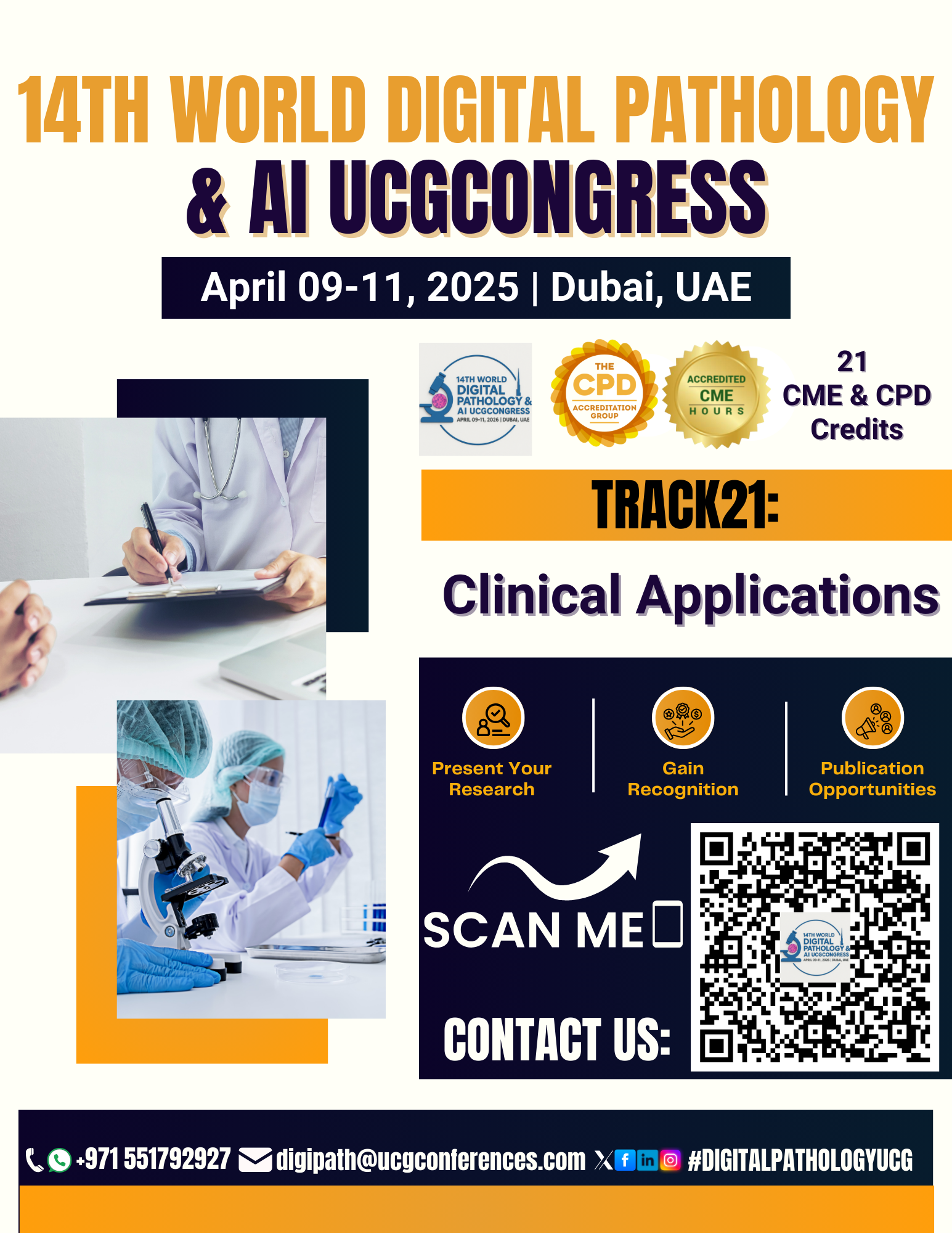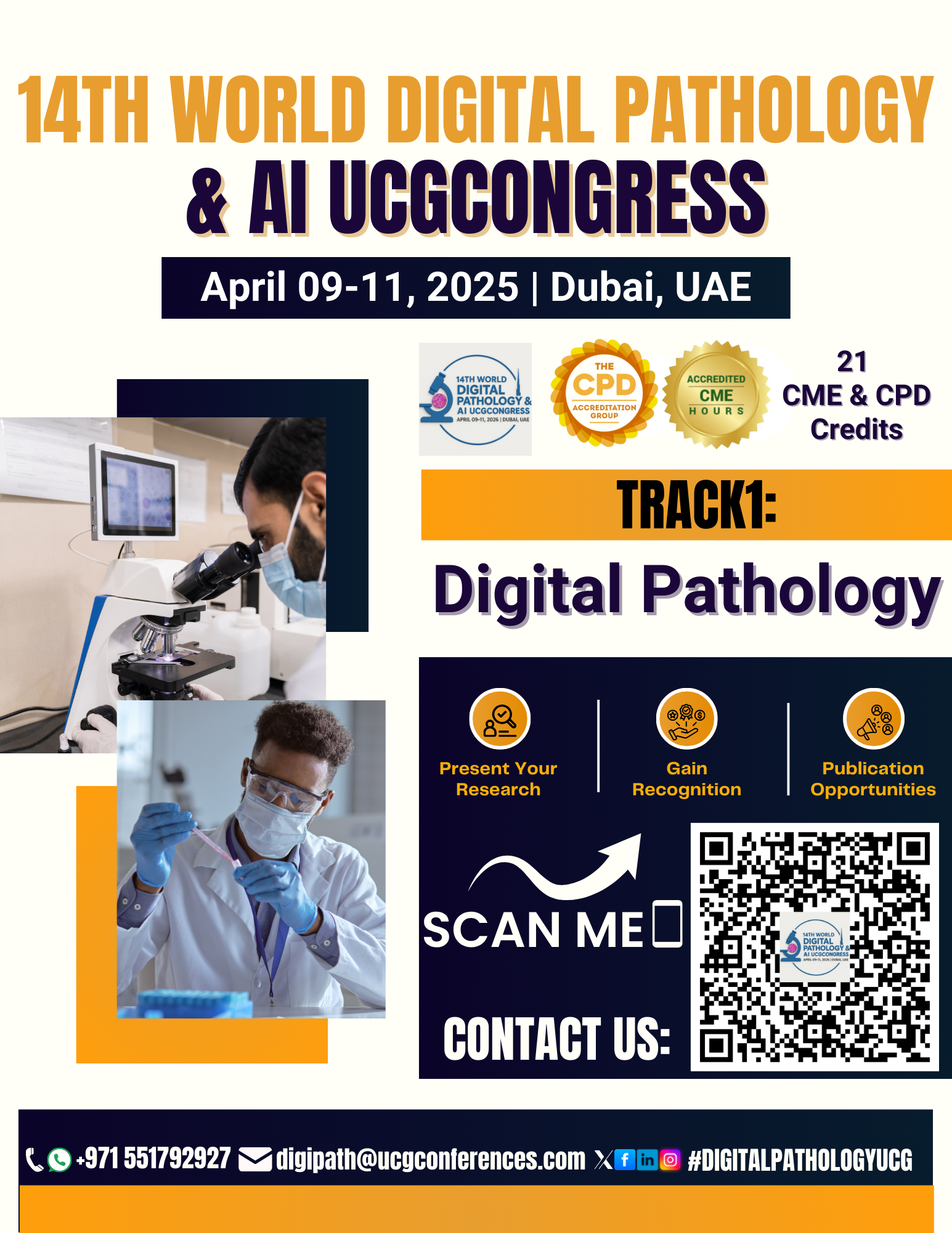



Sub track:-
Enhanced Image Quality Quantitative Analysis, Faster Turnaround Times,...

Sub track:-
Integration of Imaging Modalities, Advanced Image...

Track Overview:
Digital pathology and its associated technologies
are increasingly being integrated into clinical practice, transforming
diagnostic workflows and enhancing patient care. This track will explore the
wide range of clinical applications of digital pathology, from routine
diagnostics to advanced, personalized treatment strategies. Attendees will
learn how digital pathology tools are being used in oncology, neurology,
infectious diseases, and other specialties to improve diagnostic accuracy,
expedite workflows, and support evidence-based clinical decision-making.
Key Topics:
Digital Pathology in Oncology: Application of
digital pathology in cancer diagnostics, including tumor detection, grading,
and prognostic assessment. The use of digital tools to assist in personalized
treatment planning for cancer patients.
Neuropathology and Digital Imaging: How digital
pathology is advancing the diagnosis of neurological disorders, such as
Alzheimer's disease, neurodegenerative diseases, and brain tumors.
Infectious Diseases and Pathology: The role of
digital pathology in diagnosing infectious diseases, including the use of
advanced imaging techniques to identify pathogens and monitor disease
progression.
Pathology in Personalized Medicine: How digital
pathology supports precision medicine by integrating molecular data, imaging,
and patient history to provide individualized treatment recommendations.
Automating Clinical Workflows: How digital
pathology tools and AI-driven solutions are streamlining laboratory processes,
improving throughput, and reducing diagnostic errors in clinical settings.
Telepathology and Remote Diagnostics: The role of
digital pathology in telemedicine and remote diagnostics, enabling pathologists
to consult and diagnose from different locations, enhancing collaboration in
underserved regions.
Learning Objectives:
Understand the clinical applications of digital
pathology in oncology, neurology, infectious diseases, and other specialties.
Learn how digital pathology contributes to
personalized medicine, helping clinicians develop tailored treatment plans
based on molecular and imaging data.
Explore the benefits of automating clinical
workflows and the integration of AI in diagnostic processes.
Gain insights into the use of telepathology and
remote diagnostics in enhancing access to pathology expertise.
Discuss the challenges and future directions of
digital pathology in clinical practice, including regulatory hurdles, training
requirements, and integration with existing healthcare systems.
Target Audience:
Pathologists, oncologists, neurologists, and
clinicians interested in the clinical applications of digital pathology.
Healthcare professionals involved in the
integration of digital pathology into clinical settings, including laboratory
managers and administrators.
Researchers and developers working on advancing
clinical applications of digital pathology technologies.
Regulatory experts and policymakers focused on the
approval and adoption of digital pathology in clinical practice.
Speakers/Presenters:
Clinical pathologists and specialists using digital
pathology in oncology, neurology, and other fields.
Experts in AI and machine learning who are
developing clinical applications of digital pathology tools.
Researchers focused on the integration of digital
pathology with molecular diagnostics for precision medicine.
Healthcare professionals involved in the
implementation of digital pathology in hospitals, clinics, and laboratories.
Regulatory specialists discussing the approval
process for clinical applications of digital pathology technologies.
Conclusion:
This track will highlight how digital pathology is
revolutionizing clinical practice by improving diagnostic accuracy,
personalizing treatment approaches, and enhancing clinical workflows. Attendees
will gain valuable insights into the practical applications of digital
pathology in diverse medical fields and explore how these innovations are
improving patient care and healthcare delivery.